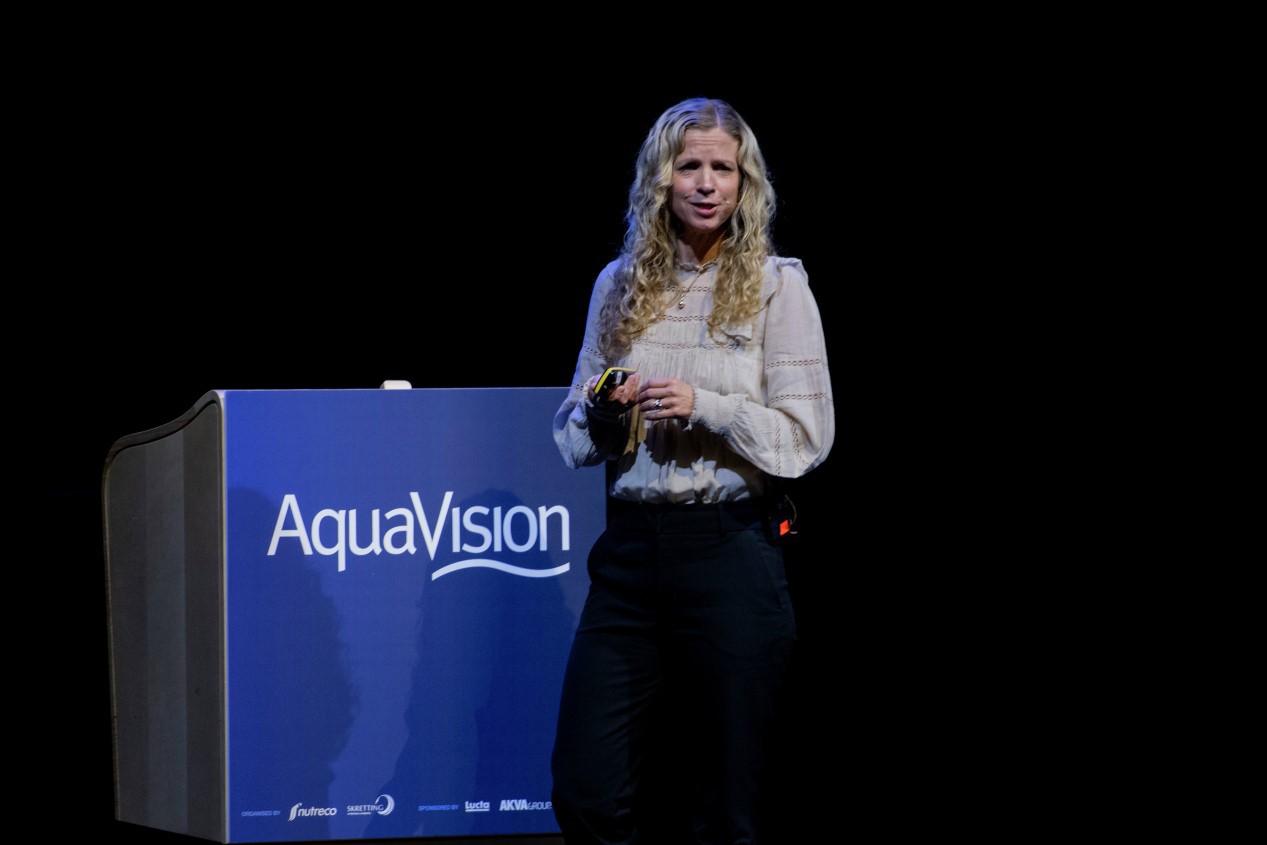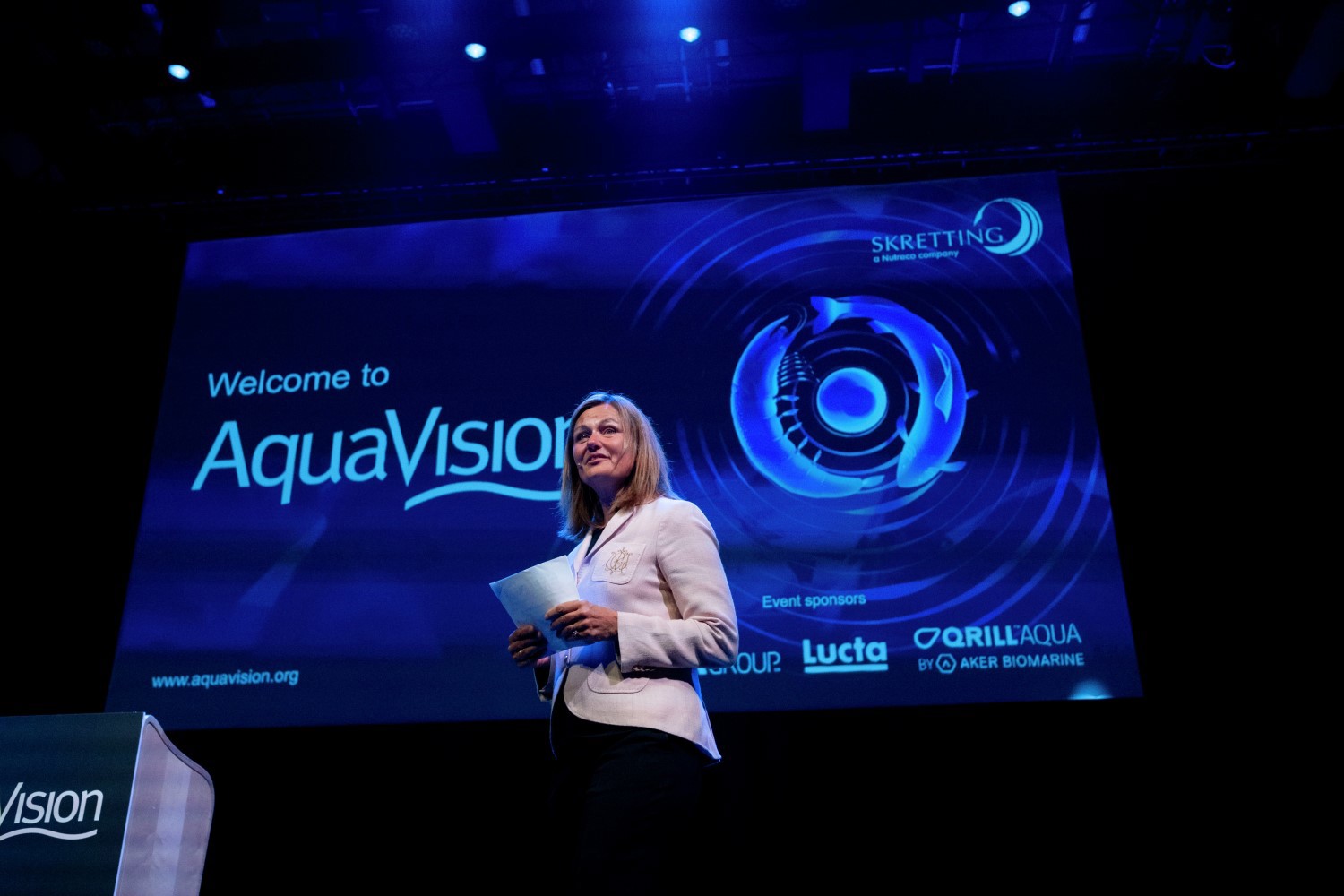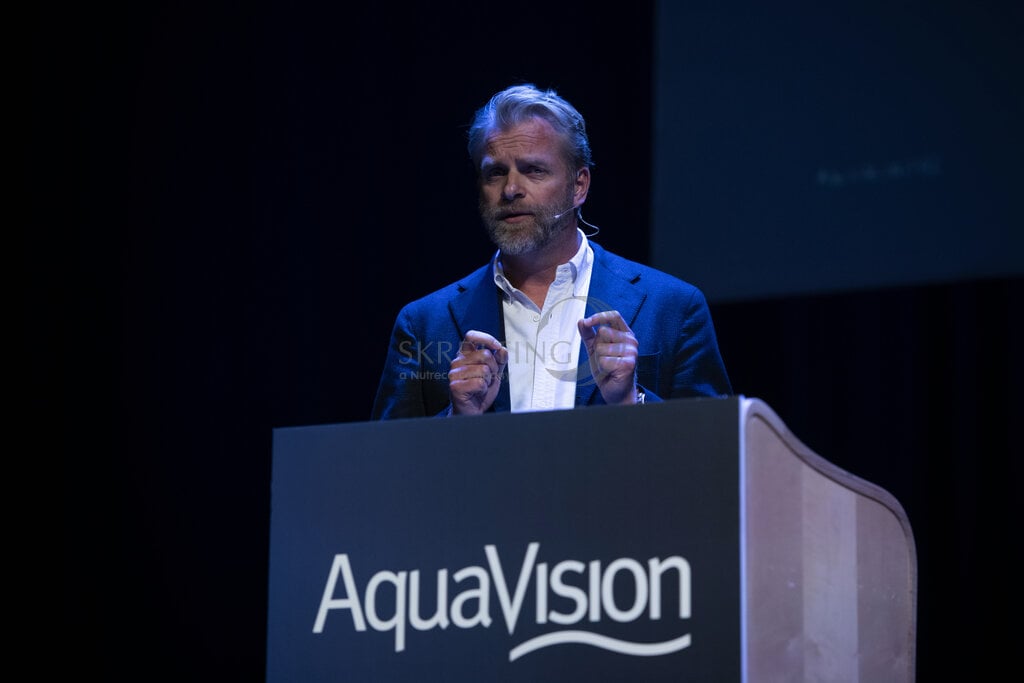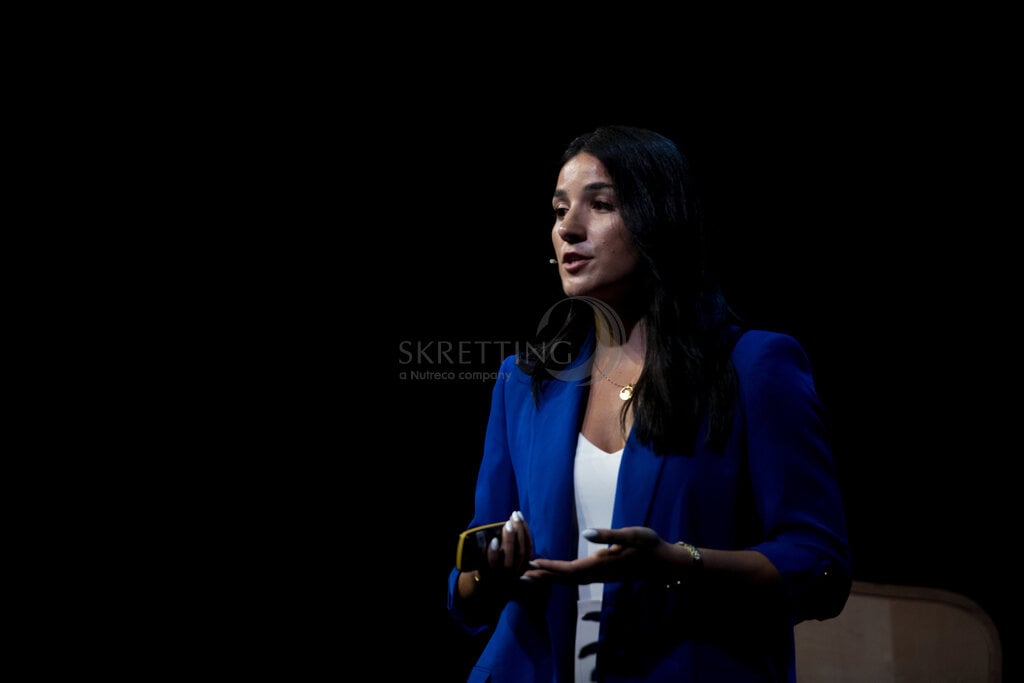By 2030, the demand for farmed salmon will surpass what the current industry and its farming systems can provide, but SalMar Aker Ocean maintains that the production gap can be filled by new technologies that support the move to offshore locations, the company’s development director, Kristine Hartmann told AquaVision 2022.
SalMar Aker Ocean: Offshore salmon farming can fill the demand void

“We believe we need land-based production, and that we need closed farming in the sea, and also that we need to go offshore.”
Offshore farming is definitely part of the solution, Hartmann stressed, but it’s also poles apart from the salmon production that’s conducted along coastlines, with considerable differences in everything from the technical installations to the way farmers need to operate.
This requires different competences from what the industry possesses today, and why SalMar decided to join forces with the Aker Group, she explained.
Together the partners have set the ambition of producing 150,000 tonnes of salmon in new ocean areas by 2030.
Emphasising how bold this objective is, it was pointed out that it took SalMar almost 30 years to reach such a level of production on its own.
While SalMar Aker Ocean already has two production cycles under its belt from its pilot farm, it’s yet to move fully offshore. Ultimately, this will require new sites and a new regulatory regime, while the company will need to improve its own biological competence, Hartmann said.
Although it doesn’t yet know exactly how the salmon will react to the rougher conditions that will be found offshore, the company does know that it needs new technology that takes care of the environment that the site is in, that looks after the needs of the fish, and that it is safe for the people working at the farm.
We believe we need land-based production, and that we need closed farming in the sea, and also that we need to go offshore.
“The technology that we develop will support these three requirements,” she said.
AquaVision also heard the biological results from the pilot farm are promising. Against SalMar Aker Ocean’s survival rate target of 96%, the first production cycle achieved 93% and the second reached 95.4%, with the mortalities mainly linked to the equipment used to extract the fish from the farm.
“We’ve also seen strong growth – a lot steeper than we thought we’d get. And size of the fish were much more even the longer the production cycle continued.”
This indicates there’s good welfare, Hartmann said, also advising that sea lice levels were low and that there has been no need for any related treatment.
However, the pilot has not been without some “adverse events”, including two separate escapes, she added. As such, the ocean farm is having better quality nets installed during an ongoing “big upgrade”.
Moving forward and to make offshore happen, Hartmann acknowledged that a lot more R&D is required. The sector also needs to look beyond Norway and find oceans that can offer the stable conditions that the fish require.
“What worries me is that we’re not able to move fast enough. We need a regulatory regime – both in Norway and internationally and that takes time. We need the clearance for new sites and new areas, and we need the development of new technologies.
“If we are able to do this, I do believe that offshore aquaculture can be the start of a new industrial adventure,” she said.


